| LARGE OR
VERY LARGE PIECES
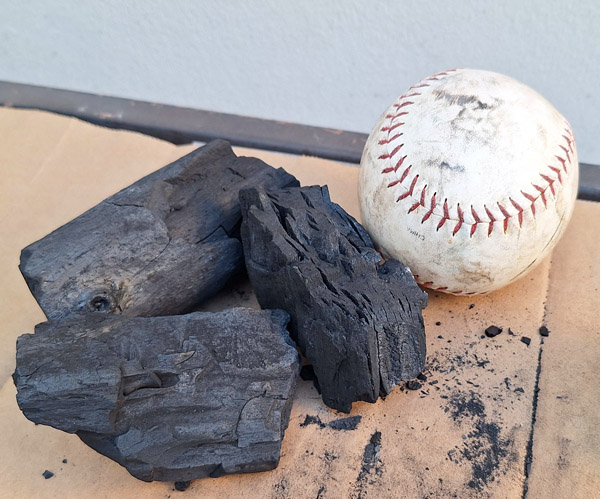
Large or very large charcoal
pieces take a fairly long time to get to an even burn.
But once they get going, they can burn for several hours.
These chunks are great for slow cooking, including BBQ /
smoking. Note: the softball on the picture is a
little less than 4 inches.
Once in a while you'll find
pieces that are up to 6 or 7 inches in a lump charcoal bag.
Those very large chunks are usually not very good for
grilling as they will take much longer to get burning than
the rest of your charcoal. But they will be fine for
slow cooking and smoking.
MEDIUM SIZE PIECES
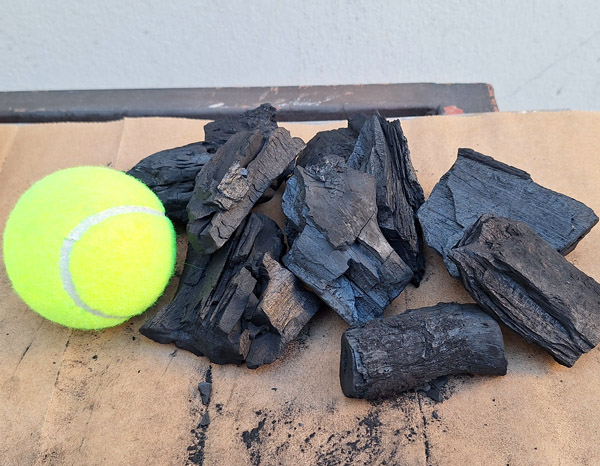
Medium size pieces (around
the size of a tennis ball) are the best for grilling.
Depending on the type of wood and the air flow on your grill,
these chunks can last for a couple of hours. And they
will be ready for grilling much faster than large charcoal
pieces. Good quality charcoal bags must have a
good portion of this size.
SMALL PIECES
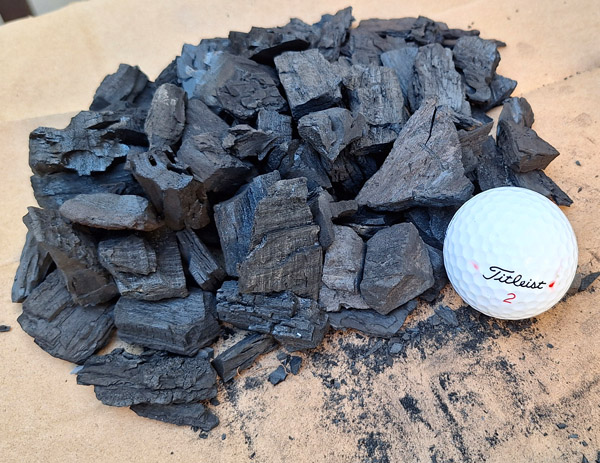
Small pieces (around the size
of a golf ball) are also good for grilling. They
can produce very high temperatures fairly fast, but they
will burn for a shorter period than medium and large chunks.
With good air flow on your grill, these pieces will last
probably for less than an hour. For grilling
burgers and small steaks that don't take too long to cook,
this size is OK.
VERY SMALL PIECES
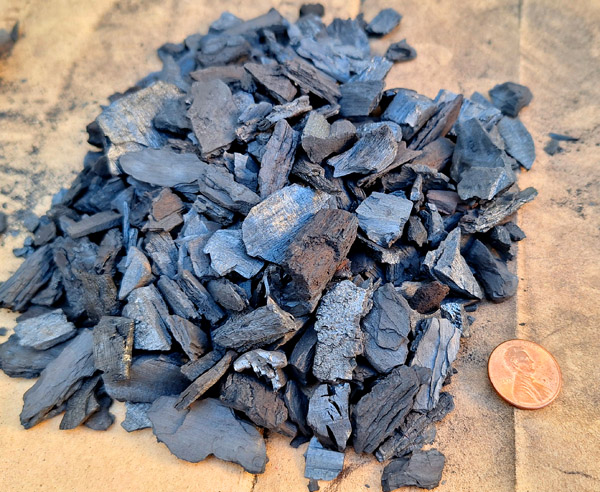
As you can imagine, very
small pieces (around the size of a coin), are not what you
want out of your charcoal bag. Most of these
pieces will go through your charcoal grate, to the bottom of
your grill. If some of them catch fire and burn, they
will do so for only a few minutes. They can also block
the air flow and make it harder to get your charcoal fired
up. A good bag of charcoal should have a minimum of
this size.
TINY PIECES AND DUST
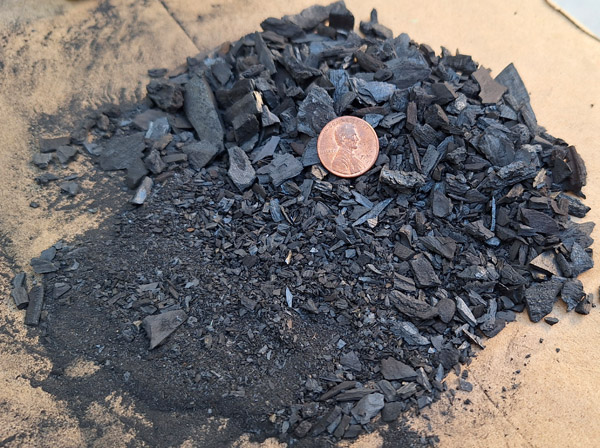
These particles only make it
messy. They will not provide any heat and will only
fill up your ash tray. Decent quality charcoal bags
should have a very minimum of this.
NOTE: it is impossible,
even for high end charcoal brands to eliminate dust from
their bags 100%. The shipping and handling
process that a bag goes through from the packaging facility
to the store shelf is long and it puts pressure, vibration
and friction on the bags. That creates dust.
|